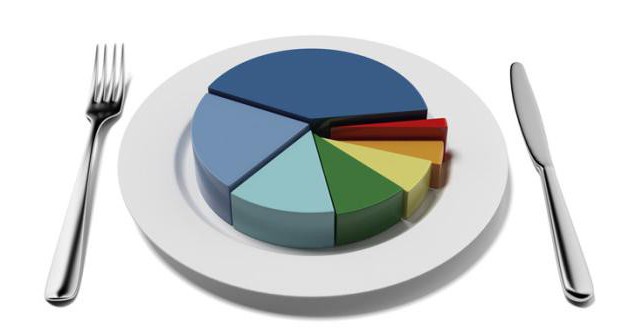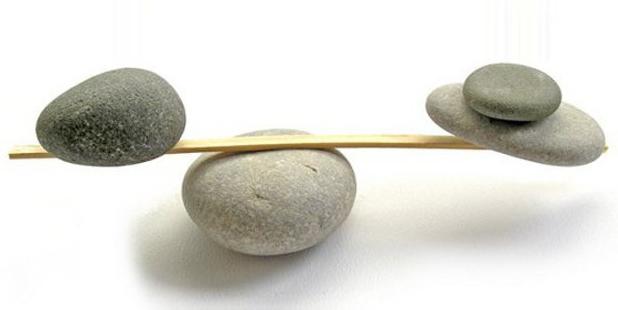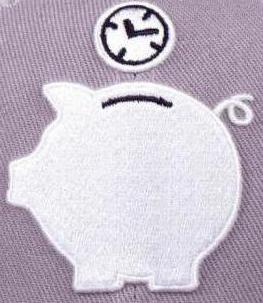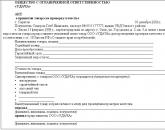Turnover ratio: formula. Asset turnover ratio: calculation formula
The management of any enterprise, as well as its investors and creditors, are interested in the company's performance indicators. To conduct a comprehensive analysis, various methods are used.
It is mandatory to study indicators of profitability and business activity. If the first group considers net profit in the process of analysis, then the second group considers sales proceeds. The study is carried out using a system of indicators. One of the first to be studied is the turnover ratio, the formula of which takes into account all the company's assets. Next, its structural components are examined. Liability indicators are also included in the analysis. This allows you to understand how quickly the company turns available resources into money, calculated on debt obligations.
The concept of the turnover cycle
The turnover ratio of the company's funds allows you to evaluate the speed with which the capital of the enterprise goes through its full cycle. A company that owns resources uses them to make products, sell them, and make a profit.
The period during which the funds available to the organization go through all the stages is called the turnover cycle. First, resources are converted into finished products. Then it is sent for sale. Customers purchase goods or services and the money flows back into the organization.
The faster the full cycle occurs, the more sales revenue the company receives. Therefore, she is interested in accelerating the turnover. highlights the limiting factors. The asset turnover ratio, the formula of which considers its structural elements, makes it possible to harmoniously distribute and use property.
Turnover period
The turnover ratio, the formula of which shows a numerical result, is not always absolutely informative. Its growth in dynamics indicates a positive trend for the organization. But this indicator does not disclose information about the duration of the cycle. 
Therefore, such coefficients are presented in days. The analyst can then determine exactly how long the period lasts. This allows you to find the optimal value of the coefficient. The researcher evaluates the turnover cycle of fixed and current assets, accounts payable. But it is movable property that deserves the closest attention. This analysis reflects the system of the company's interaction with suppliers, its marketing and material support for current activities.
Cost cycle
It is the current assets that arouse great interest of analysts in the presented analysis. Therefore, for the assessment, the turnover ratio of working capital is used, the formula of which is discussed below.
In order to have information about the factors influencing this indicator, the financial manager necessarily considers the duration of the cycle of the components of current assets. Their duration (except for money) is summed up.

This is how the cost cycle indicator is obtained. The longer it is, the more financial sources the company directs into circulation. They accumulate in it.
The faster the cost cycle occurs, the more funds are released from circulation. They can be used more constructively.
General formula
The calculation of the ratio of current liabilities or assets has a general form. This is explained by an identical indicator with which one or another item of property or capital is compared. The formula looks like this:
Kob \u003d Base of calculation / Asset (or Passive).
The turnover ratio, the formula of which is used by the financial services of enterprises, involves taking into account the average annual value of the indicator. Only the article being evaluated changes. The numerator of the formula is also selected depending on the coefficient under study. 
When considering receivables, advance settlements with buyers, their average annual value is compared with the proceeds from sales. If the rate of turnover of debt on loans and advances to suppliers is calculated, the cost price acts as the calculation base. She also participates in the consideration of indicators of the turnover of finished products, work in progress.
The inventory turnover ratio, the formula of which corresponds to the above methodology, takes material costs as a base.
Financial statements
To determine the indicators of business activity, financial statements are used. The denominator is found according to form No. 1 "Balance", and the numerator - according to form No. 2 "Profit and loss statement". The asset turnover ratio, the formula of which was discussed above, according to the reporting, has the following form:
Kob = s. 2110 (form 2)/s. 1600 avg. (form 1).
To determine the turnover ratio of current assets, the data of line 1200 of the balance sheet is taken as the denominator. The indicator that determines the turnover of fixed assets in the previous formula uses the data reflected in item 1150 of the balance sheet.

In general, the calculation of the turnover of current liabilities looks like this:
Kotp = s. 2110 (form 2)/s. 1300 avg. (form 1).
If investors need to estimate the speed of movement in the presented methodology, the amount c is applied. 1500 and p. 1400. To calculate the turnover of debts of debtors, data from s. 1230, and stocks - the amount of s. 1210 and p. 1220.
Stocks
When assessing the movement of stocks, it is more expedient to apply a methodology that shows the result in days. This is one of the most important characteristics that defines the financial service. There should be enough stocks so that the production cycle runs without failures and stops. But materials should not be accumulated, "frozen" in the company's current assets.

The inventory turnover ratio, the formula of which was discussed earlier, allows you to determine the period in days:
Tz \u003d Material costs / Stocks (average) * 360.
If the reporting period takes a different number of days, its duration is taken into account. In general, for the calculation in the numerator, the amount of proceeds from sales is used. But if we are talking about stocks, their movement is determined by the amount of material costs.
To optimize the indicator and speed up the cycle, it is necessary to reduce the amount of "dead" stocks that are not purchased with each new operating period.
finished goods
The turnover ratio, whose calculation formula examines such current assets as receivables and finished products, is also of interest to analysts. If a significant amount of funds accumulates in these balance sheet items, this negatively affects the work of the company. If, after the analysis, a too long period of debt receivable turnover is determined, it is necessary to change the system of settlements with buyers.
Perhaps you should switch to an advance, non-cash type of payment. The amount of bad debt is also determined.
If the enterprise accumulates a significant amount of finished goods and work in progress, the sales system is reviewed, equipment is modernized.
current assets
The duration of the periods of turnover of balance sheet items is added up. This allows you to evaluate the effectiveness of the operation of the company's property. In general, the mobile resources of the company allows you to study the turnover ratio of working capital (the formula was presented earlier). 
The increase in the duration of the cost cycle negatively affects a number of other indicators. It increases as its absolute value decreases. It also reduces the return on capital. In this case, a whole system of measures is developed to optimize the structure of the company's property.
Accounts payable
Analysts are looking at more than just the speed of an organization's property cycle. They also study the capital turnover ratio (the formula was discussed earlier). This technique shows how many times during the operating period the company settles with creditors for its obligations.
Therefore, for the calculation, it is the current debt that is taken into account. Often, an enterprise with a large amount of receivables determines a significant amount of current liabilities. This is a negative trend. Such an organization is limited in its ability to attract borrowed capital, acquire materials, resources for production on credit. By optimizing the structure of assets, it is possible to improve the performance of liabilities.
Economic effect
A special place in the financial and economic analysis is occupied by turnover ratios. Balance formulas make it possible to find factors constraining development. A qualitative assessment of business activity makes it possible to determine how effectively the company conducts its commercial activities.
All indicators obtained during the analysis are considered in dynamics and compared with similar coefficients of competing companies. If the turnover ratio, the formula of which allows you to evaluate the structure of the balance, decreases, the cycle period is accelerated. At the same time, the organization expands sales markets, it has permanent suppliers and buyers. This is a sound commercial policy of the enterprise.
The acceleration of the turnover period indicates a simultaneous increase in the return on capital. The company uses its property effectively. Therefore, the presented system of indicators is necessarily analyzed by the financial service of the organization.
Popular
- How to get a TIN: possible ways
- What kind of business can you do?
- Written notice of termination of the lease
- Business from scratch. Things to do?
- Cost of goods sold: formula, methodology and calculation example
- How to write a vacation application - examples
- What kind of business can be opened in a small town or village?
- The formula for calculating the cost of services, products sold and total cost
- Sample memorandum: I bring to your attention
- Example of an explanatory note for being late for work




